Rise of Pentecostalism 2
Chris Knepp
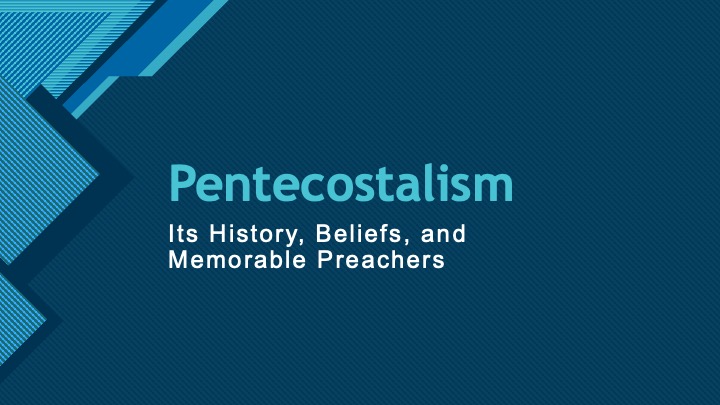
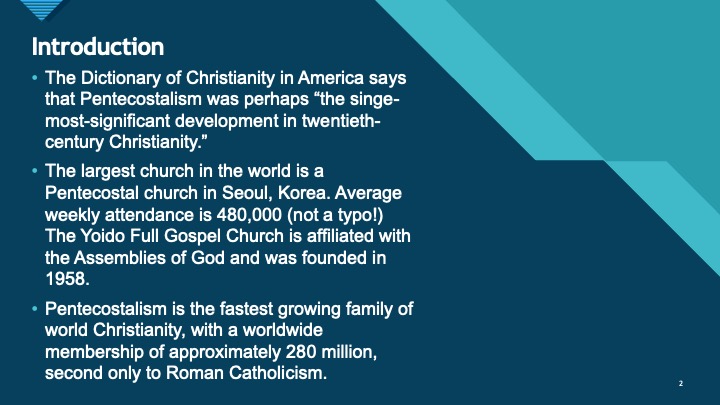
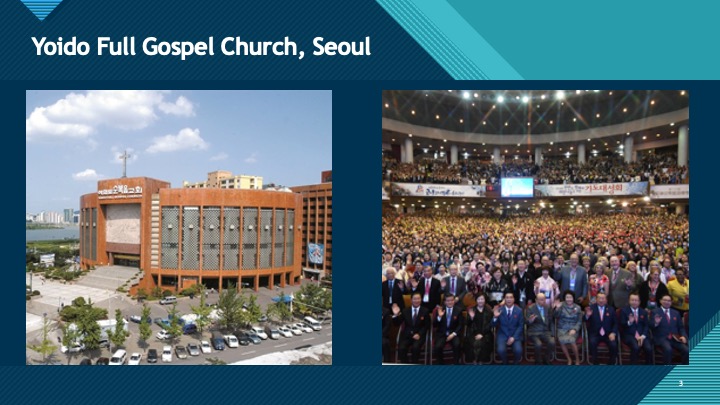
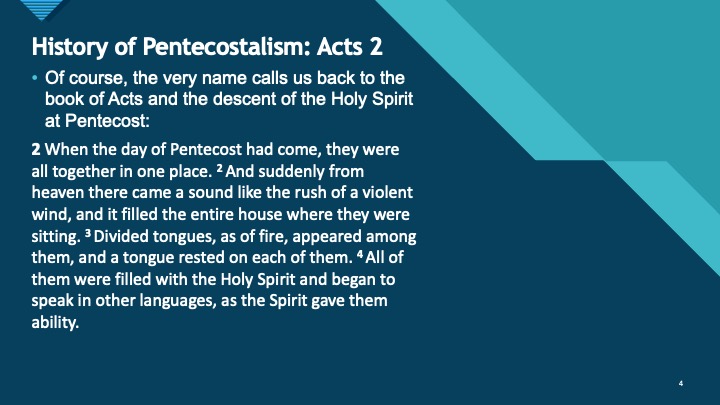
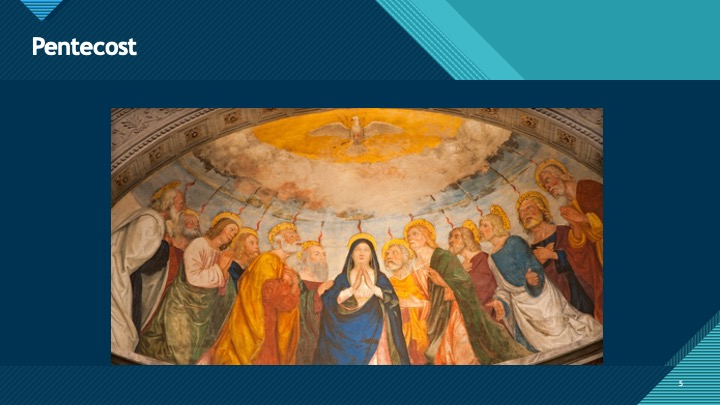
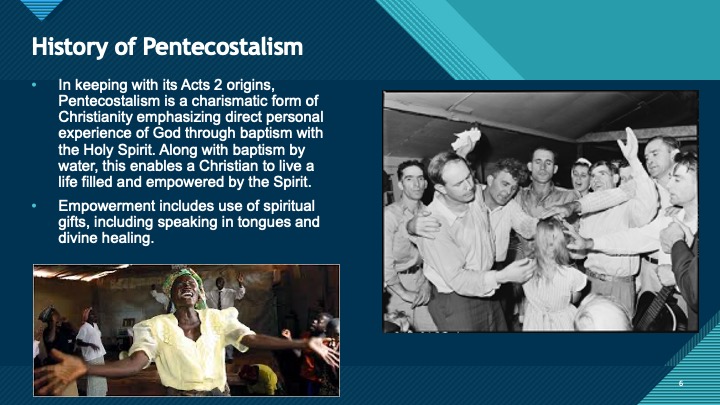
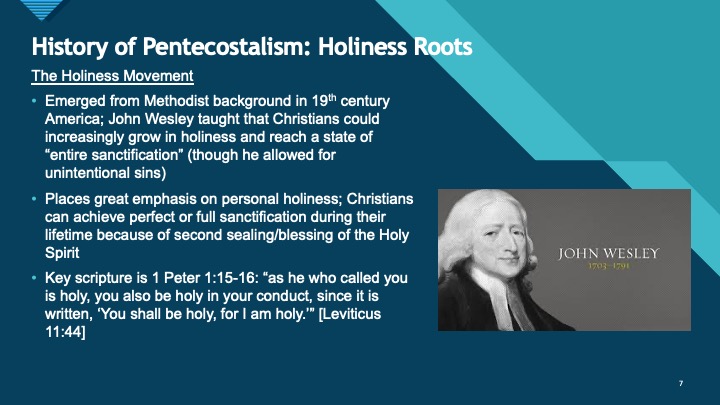
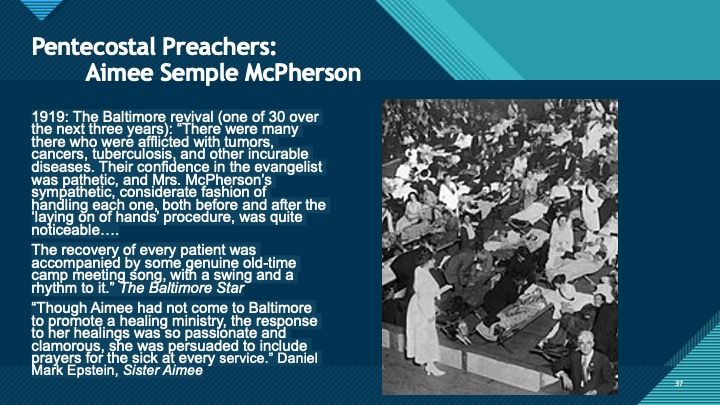
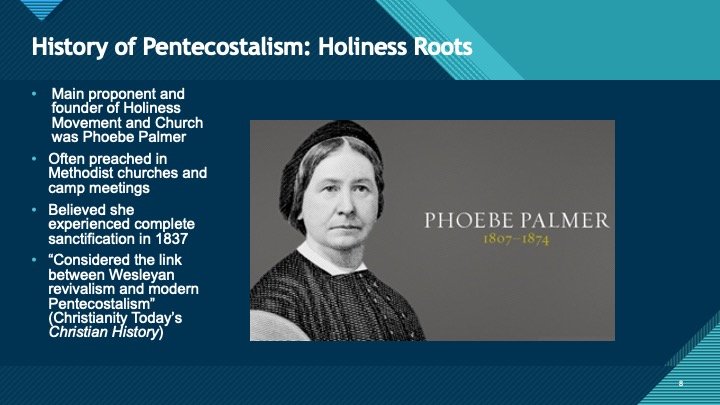
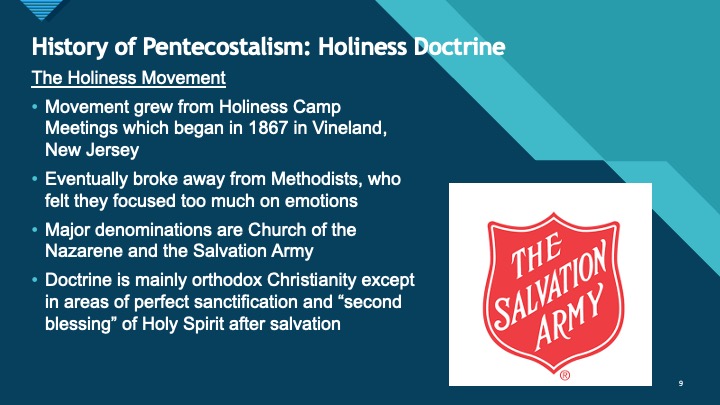
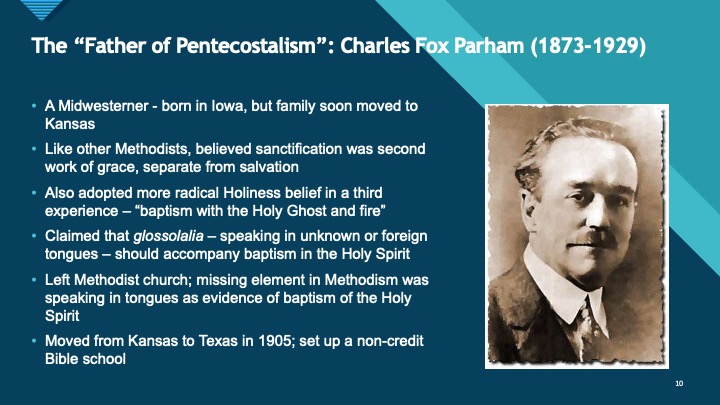
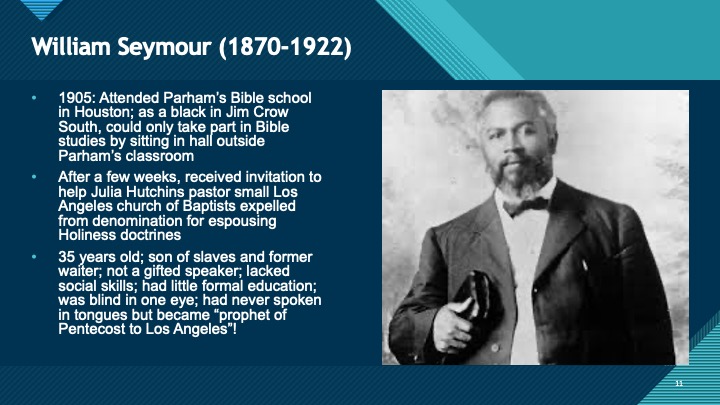
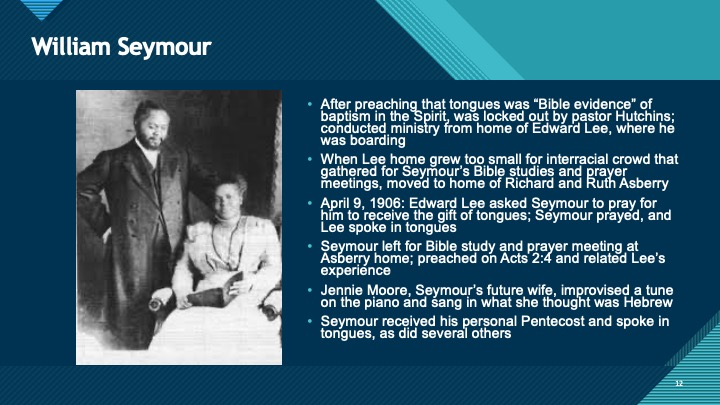
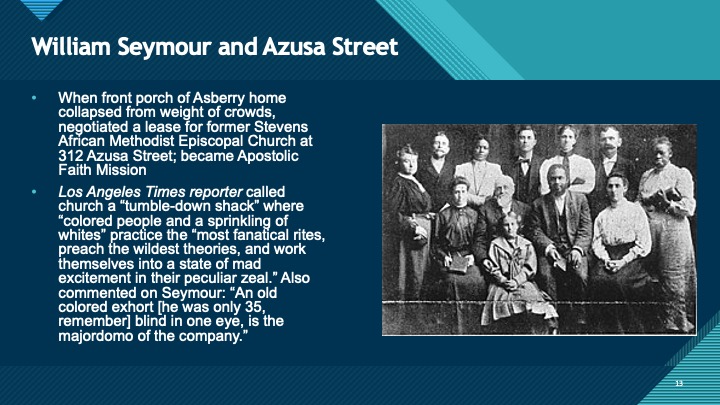
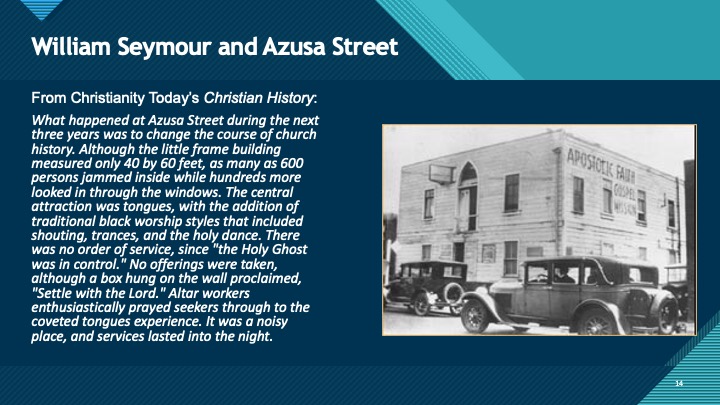
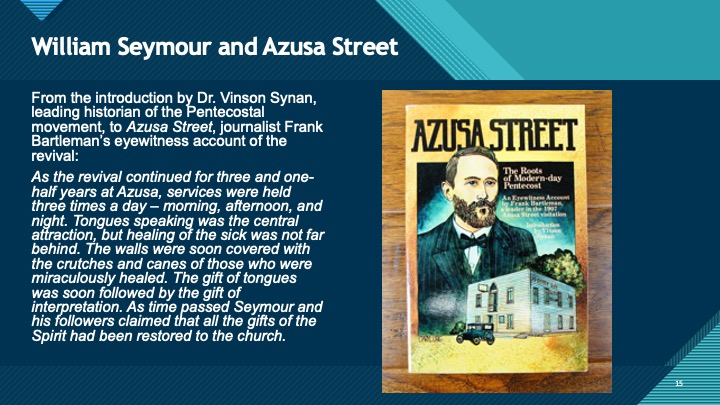
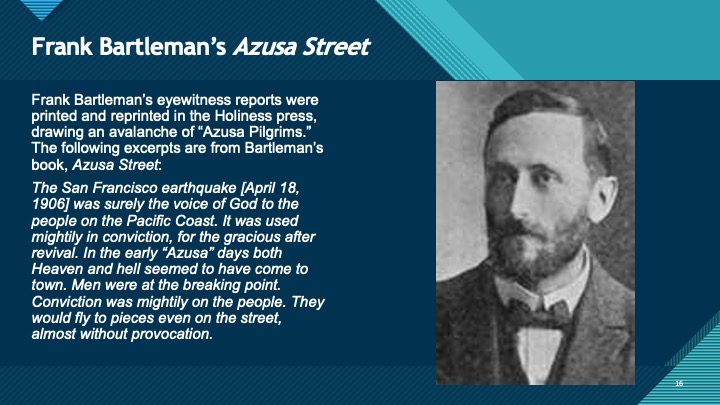
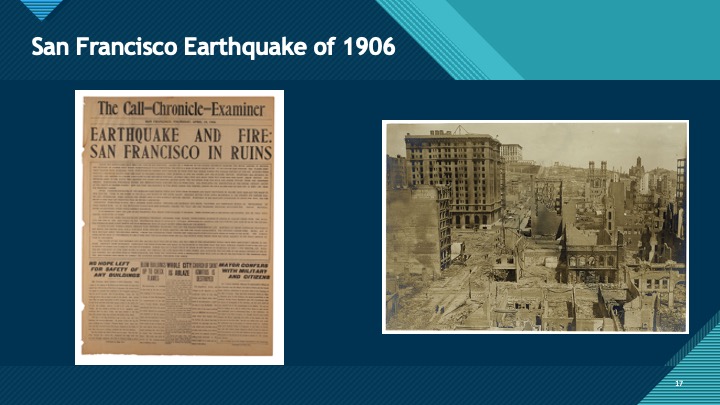
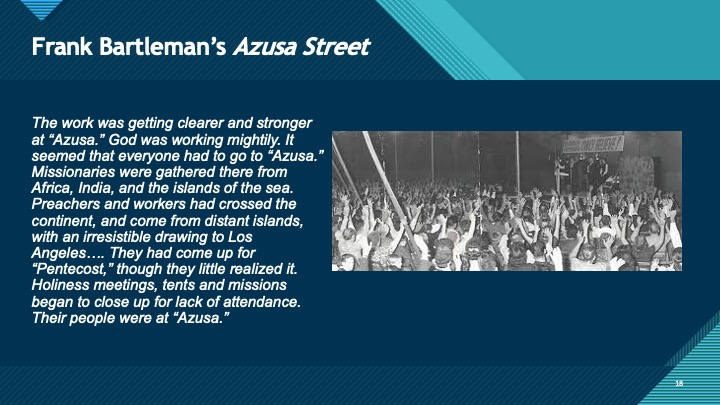
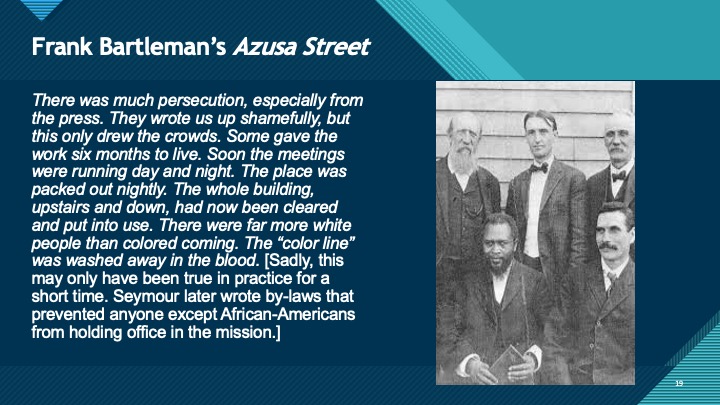
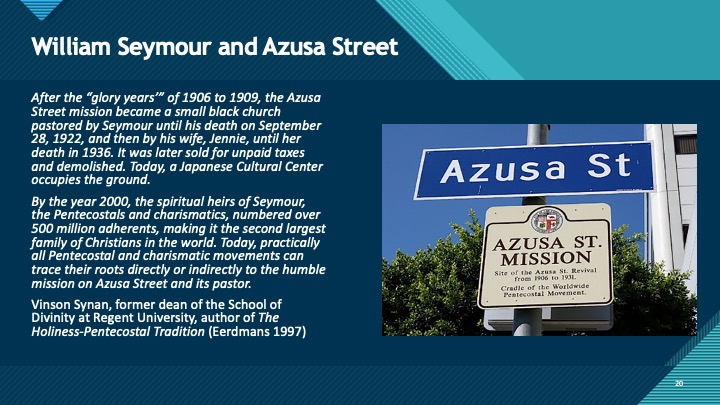
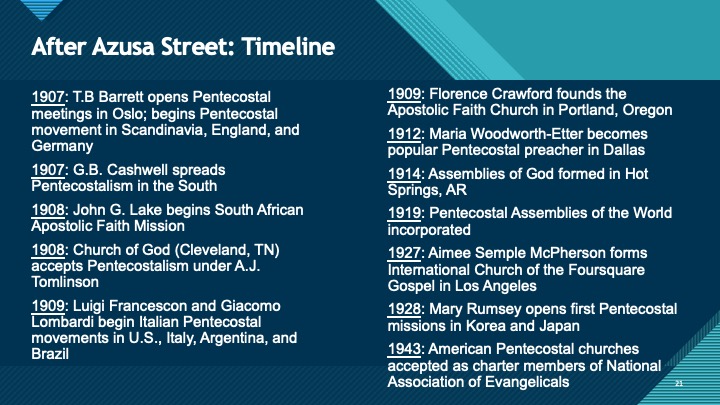
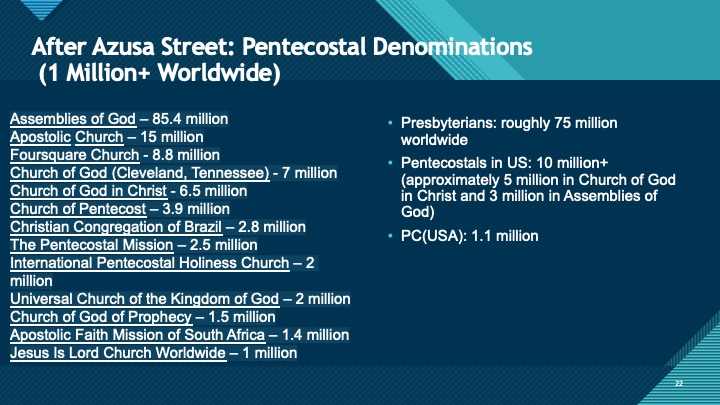
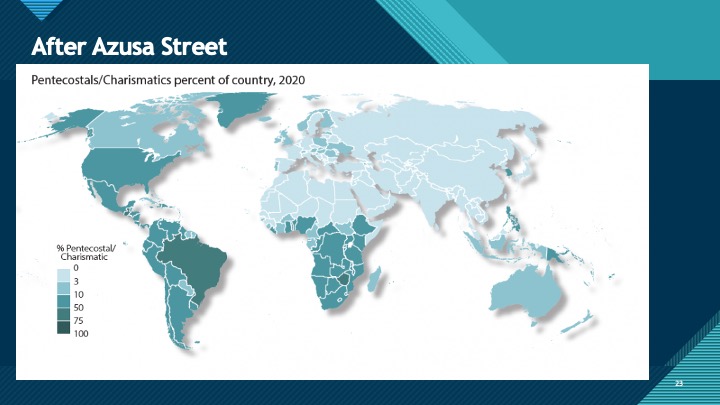
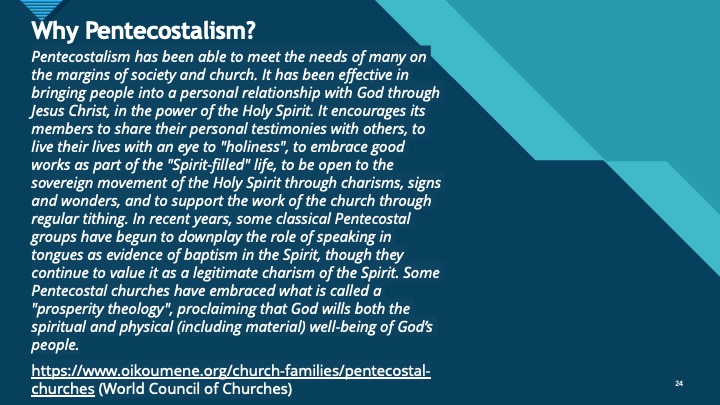
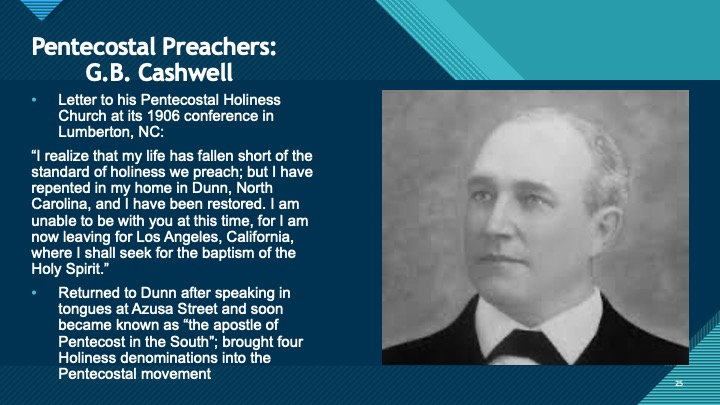
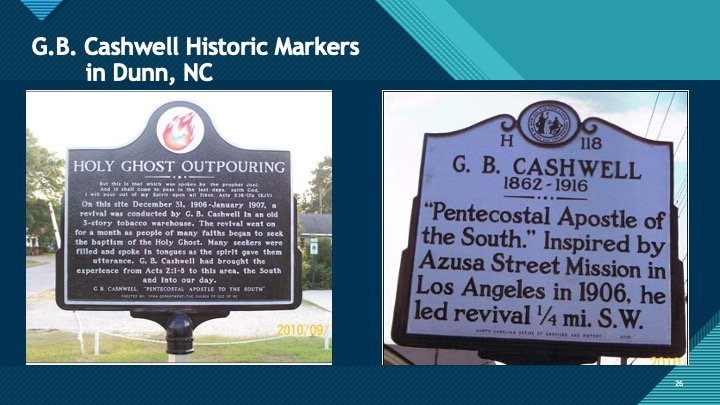
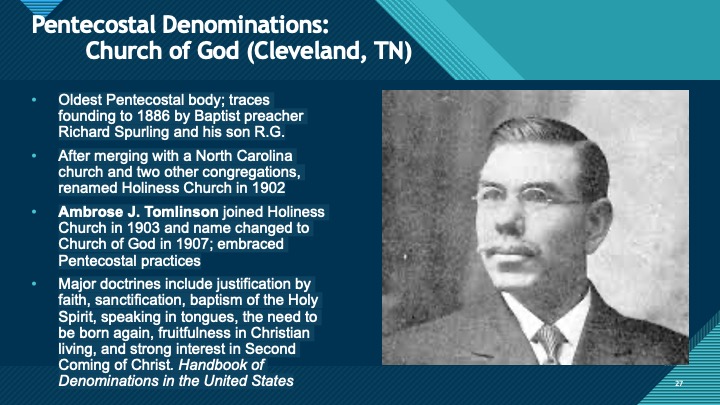
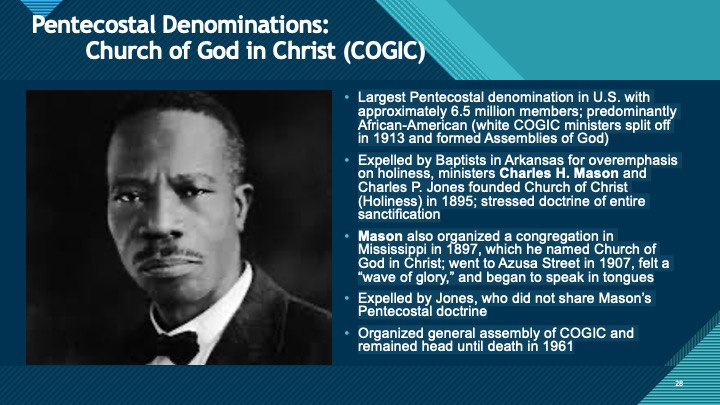
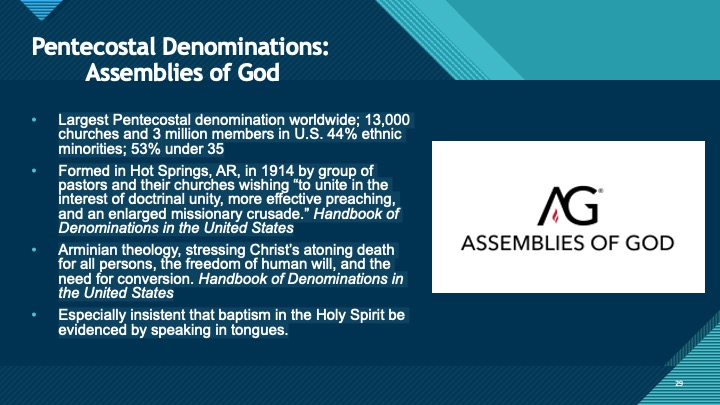
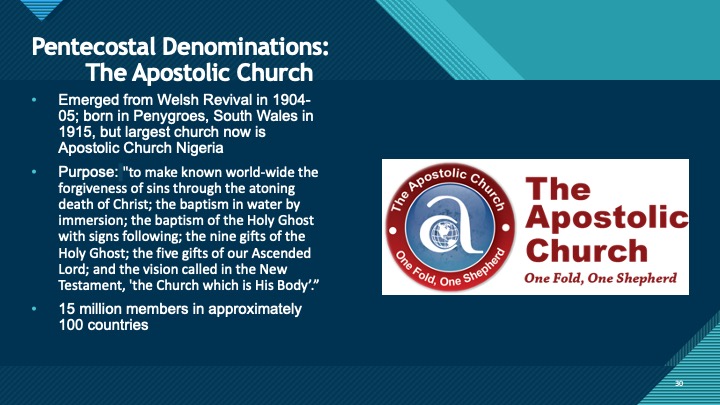
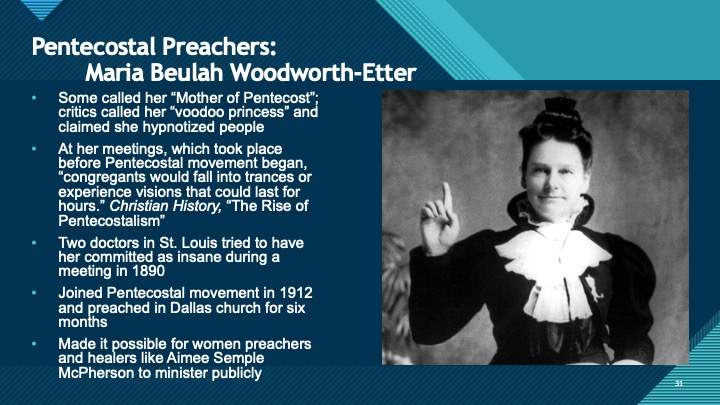
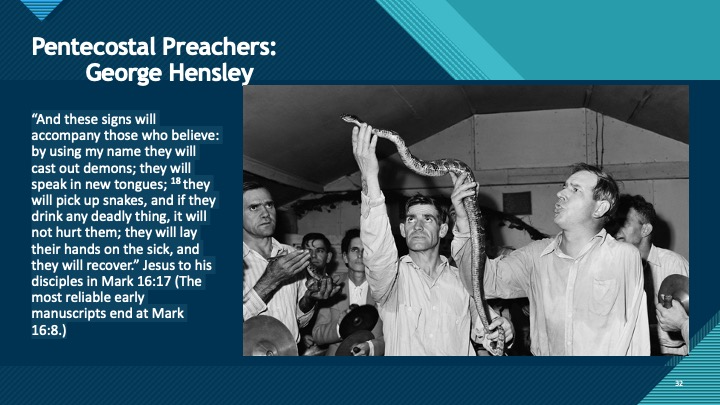
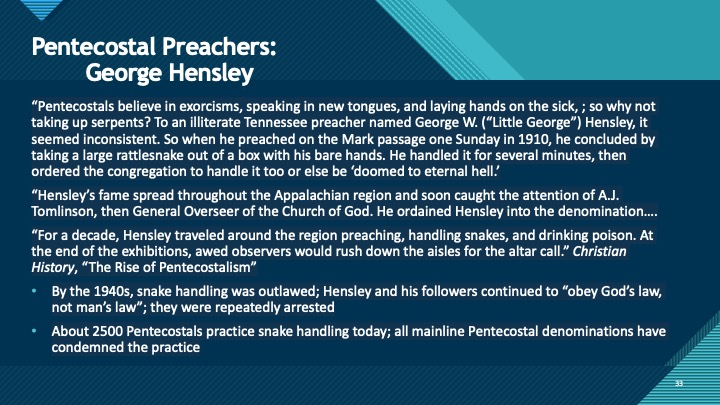
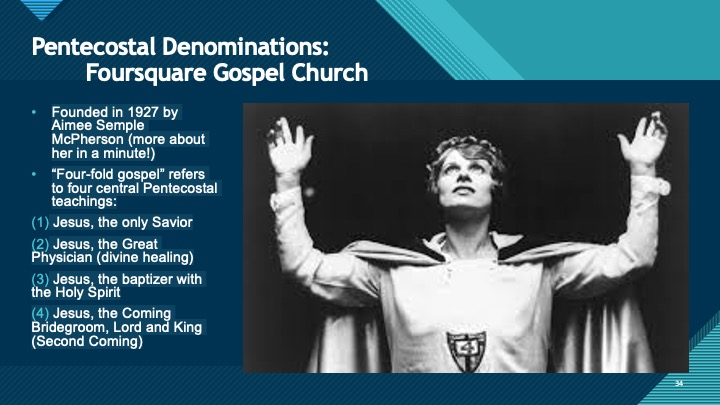
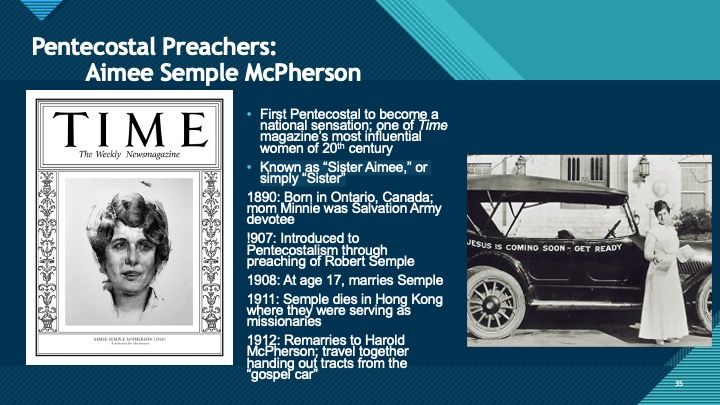
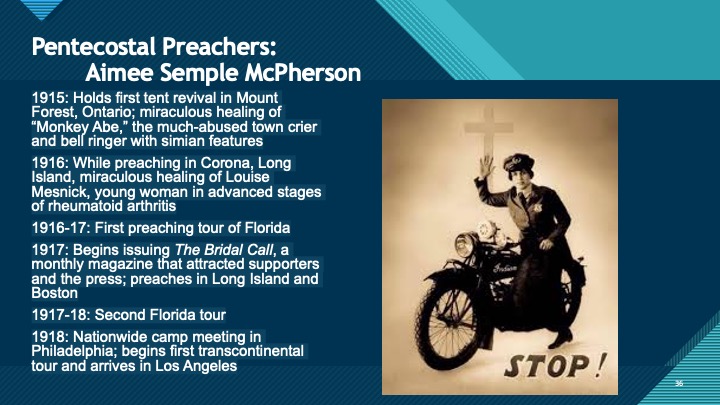

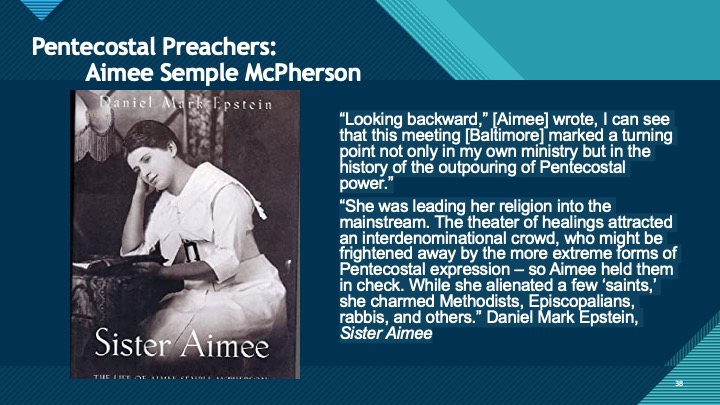
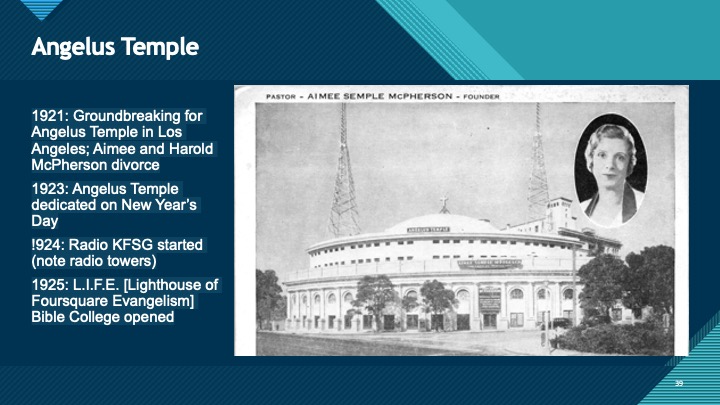
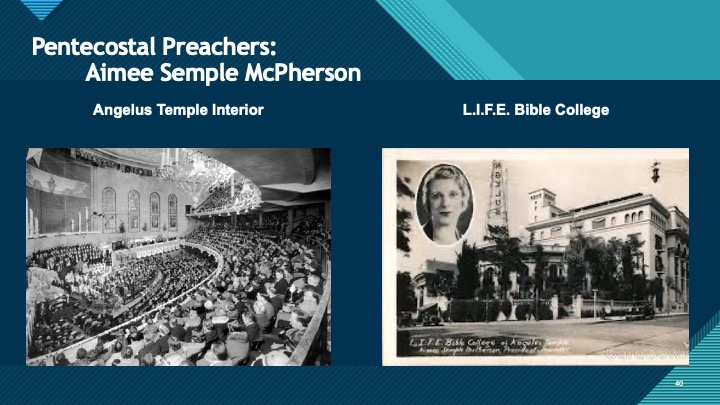
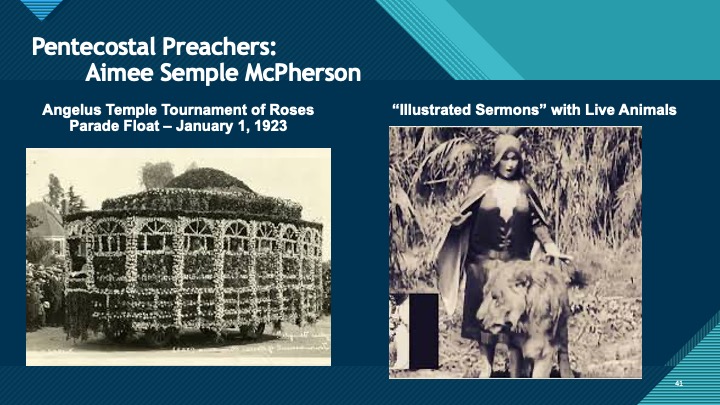
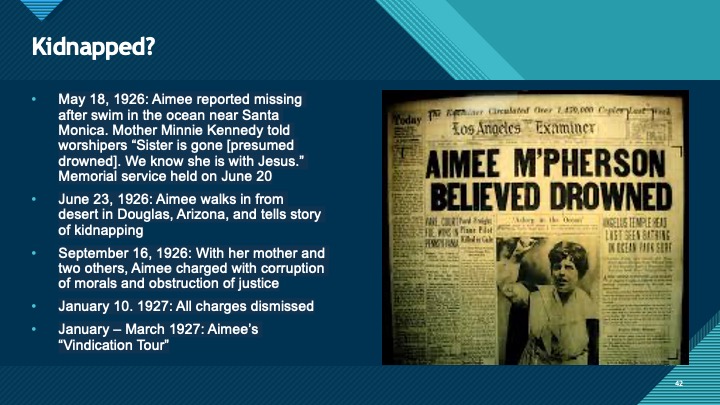
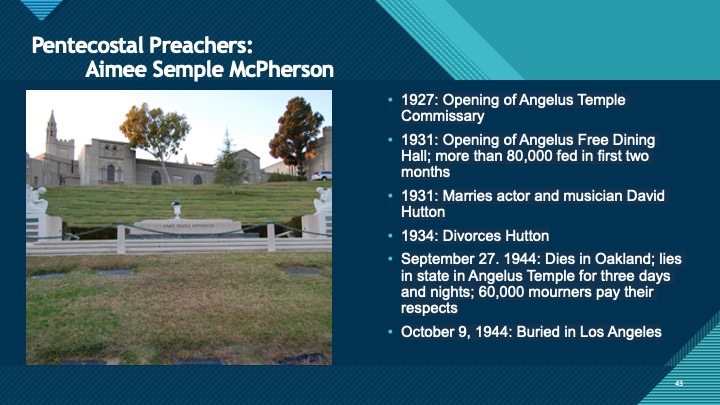
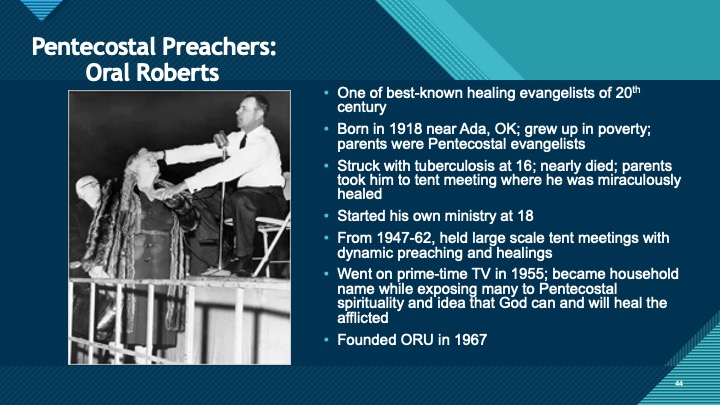
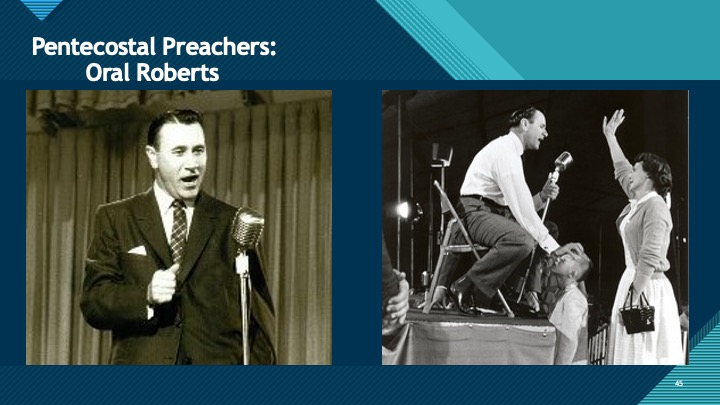
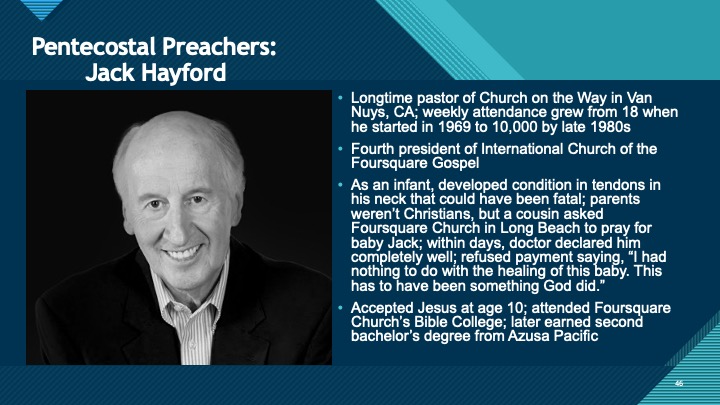
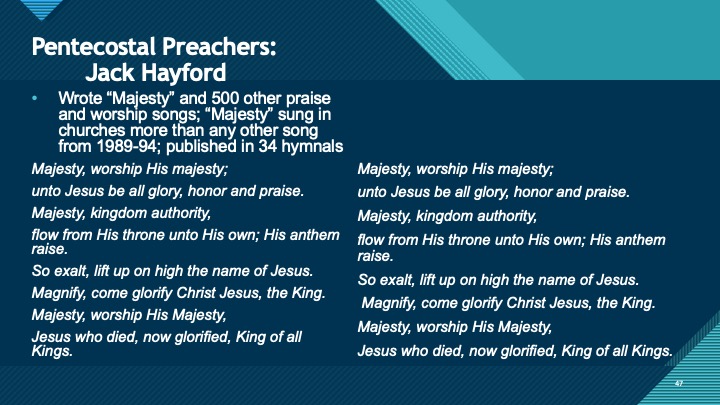

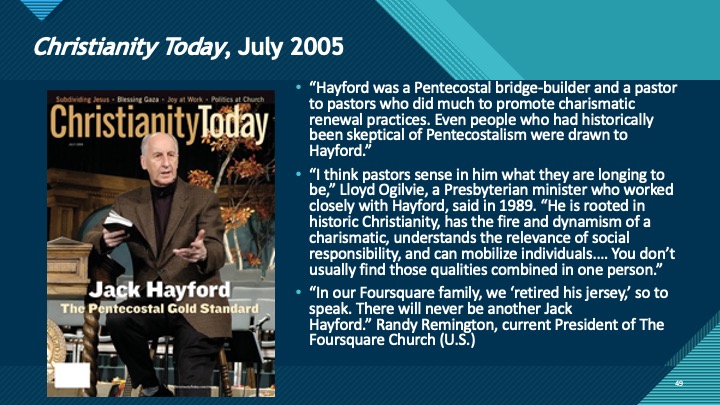
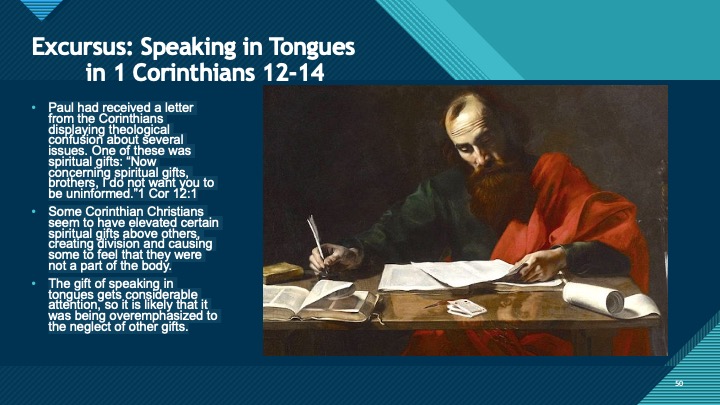
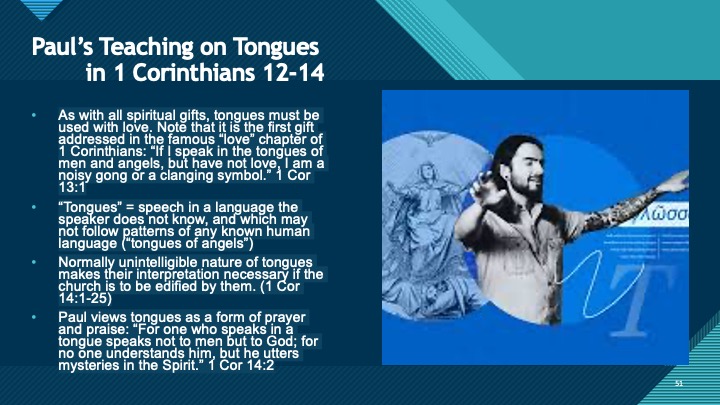
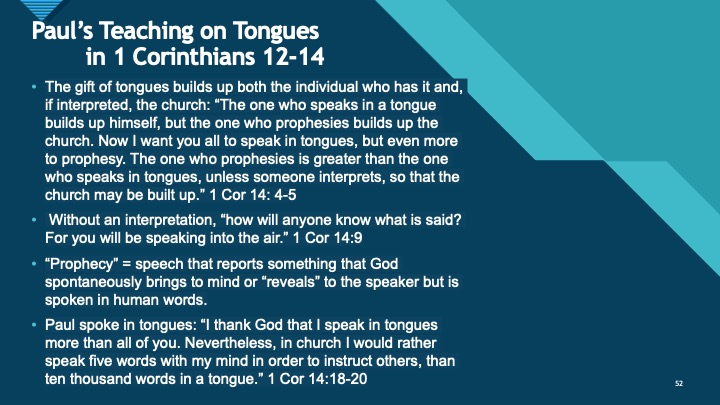
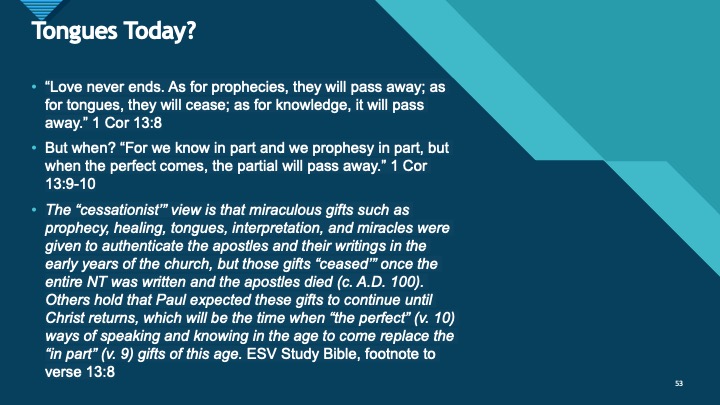
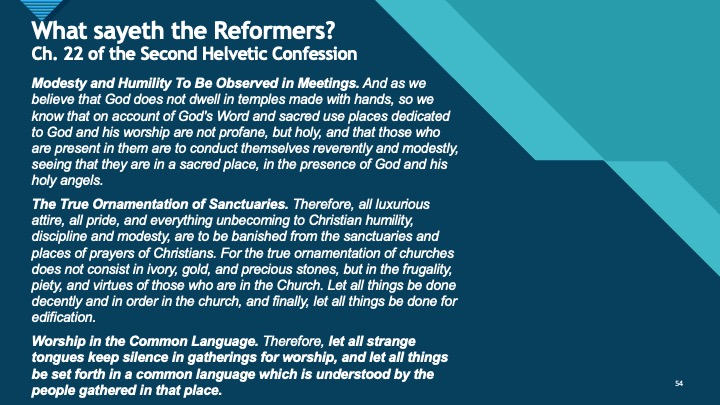
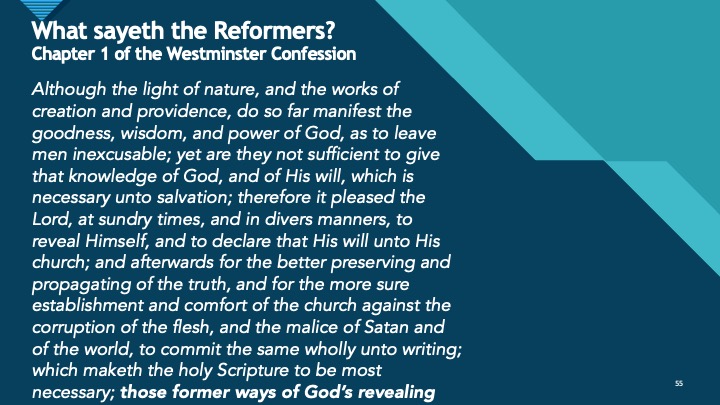
Rise of Pentecostalism 2
Links
< Home Page > < Rise of Pentecostalism Menu > < Top of Page >
Pentecostalism Text 2 Text
Pentecostalism
Its History, Beliefs, and Memorable Preachers
Introduction
• The Dictionary of Christianity in America says that Pentecostalism was perhaps “the singe-most-significant development in twentieth-century Christianity.”
• The largest church in the world is a Pentecostal church in Seoul, Korea. Average weekly attendance is 480,000 (not a typo!) The Yoido Full Gospel Church is affiliated with the Assemblies of God and was founded in 1958.
• Pentecostalism is the fastest growing family of world Christianity, with a worldwide membership of approximately 280 million, second only to Roman Catholicism.
History of Pentecostalism: Acts 2
• Of course, the very name calls us back to the book of Acts and the descent of the Holy Spirit at Pentecost:
2 When the day of Pentecost had come, they were all together in one place. 2 And suddenly from heaven there came a sound like the rush of a violent wind, and it filled the entire house where they were sitting. 3 Divided tongues, as of fire, appeared among them, and a tongue rested on each of them. 4 All of them were filled with the Holy Spirit and began to speak in other languages, as the Spirit gave them ability.
• In keeping with its Acts 2 origins, Pentecostalism is a charismatic form of Christianity emphasizing direct personal experience of God through baptism with the Holy Spirit. Along with baptism by water, this enables a Christian to live a life filled and empowered by the Spirit.
• Empowerment includes use of spiritual gifts, including speaking in tongues and divine healing.
History of Pentecostalism: Holiness Roots
The Holiness Movement
• Emerged from Methodist background in 19th century America; John Wesley taught that Christians could increasingly grow in holiness and reach a state of “entire sanctification” (though he allowed for unintentional sins)
• Places great emphasis on personal holiness; Christians can achieve perfect or full sanctification during their lifetime because of second sealing/blessing of the Holy Spirit
• Key scripture is 1 Peter 1:15-16: “as he who called you is holy, you also be holy in your conduct, since it is written, ‘You shall be holy, for I am holy.’” [Leviticus 11:44]
The Holiness Movement
• Main proponent and founder of Holiness Movement and Church was Phoebe Palmer
• Often preached in Methodist churches and camp meetings
• Believed she experienced complete sanctification in 1837
• “Considered the link between Wesleyan revivalism and modern Pentecostalism” (Christianity Today’s Christian History)
History of Pentecostalism: Holiness Doctrine
The Holiness Movement
• Movement grew from Holiness Camp Meetings which began in 1867 in Vineland, New Jersey
• Eventually broke away from Methodists, who felt they focused too much on emotions
• Major denominations are Church of the Nazarene and the Salvation Army
• Doctrine is mainly orthodox Christianity except in areas of perfect sanctification and “second blessing” of Holy Spirit after salvation
William Seymour (1870-1922)
• 1905: Attended Parham’s Bible school in Houston; as a black in Jim Crow South, could only take part in Bible studies by sitting in hall outside Parham’s classroom
• After a few weeks, received invitation to help Julia Hutchins pastor small Los Angeles church of Baptists expelled from denomination for espousing Holiness doctrines
• 35 years old; son of slaves and former waiter; not a gifted speaker; lacked social skills; had little formal education; was blind in one eye; had never spoken in tongues but became “prophet of Pentecost to Los Angeles”!
• After preaching that tongues was “Bible evidence” of baptism in the Spirit, was locked out by pastor Hutchins; conducted ministry from home of Edward Lee, where he was boarding
• When Lee home grew too small for interracial crowd that gathered for Seymour’s Bible studies and prayer meetings, moved to home of Richard and Ruth Asberry
• April 9, 1906: Edward Lee asked Seymour to pray for him to receive the gift of tongues; Seymour prayed, and Lee spoke in tongues
• Seymour left for Bible study and prayer meeting at Asberry home; preached on Acts 2:4 and related Lee’s experience
• Jennie Moore, Seymour’s future wife, improvised a tune on the piano and sang in what she thought was Hebrew
• Seymour received his personal Pentecost and spoke in tongues, as did several others
William Seymour and Azusa Street
• When front porch of Asberry home collapsed from weight of crowds, negotiated a lease for former Stevens African Methodist Episcopal Church at 312 Azusa Street; became Apostolic Faith Mission
• Los Angeles Times reporter called church a “tumble-down shack” where “colored people and a sprinkling of whites” practice the “most fanatical rites, preach the wildest theories, and work themselves into a state of mad excitement in their peculiar zeal.” Also commented on Seymour: “An old colored exhort [he was only 35, remember] blind in one eye, is the majordomo of the company.”
• From Christianity Today’s Christian History:
• What happened at Azusa Street during the next three years was to change the course of church history. Although the little frame building measured only 40 by 60 feet, as many as 600 persons jammed inside while hundreds more looked in through the windows. The central attraction was tongues, with the addition of traditional black worship styles that included shouting, trances, and the holy dance. There was no order of service, since "the Holy Ghost was in control." No offerings were taken, although a box hung on the wall proclaimed, "Settle with the Lord." Altar workers enthusiastically prayed seekers through to the coveted tongues experience. It was a noisy place, and services lasted into the night.
• From the introduction by Dr. Vinson Synan, leading historian of the Pentecostal movement, to Azusa Street, journalist Frank Bartleman’s eyewitness account of the revival:
• As the revival continued for three and one-half years at Azusa, services were held three times a day – morning, afternoon, and night. Tongues speaking was the central attraction, but healing of the sick was not far behind. The walls were soon covered with the crutches and canes of those who were miraculously healed. The gift of tongues was soon followed by the gift of interpretation. As time passed Seymour and his followers claimed that all the gifts of the Spirit had been restored to the church.
Frank Bartleman’s Azusa Street
Frank Bartleman’s eyewitness reports were printed and reprinted in the Holiness press, drawing an avalanche of “Azusa Pilgrims.” The following excerpts are from Bartleman’s book, Azusa Street:
The San Francisco earthquake [April 18, 1906] was surely the voice of God to the people on the Pacific Coast. It was used mightily in conviction, for the gracious after revival. In the early “Azusa” days both Heaven and hell seemed to have come to town. Men were at the breaking point. Conviction was mightily on the people. They would fly to pieces even on the street, almost without provocation.
The work was getting clearer and stronger at “Azusa.” God was working mightily. It seemed that everyone had to go to “Azusa.” Missionaries were gathered there from Africa, India, and the islands of the sea. Preachers and workers had crossed the continent, and come from distant islands, with an irresistible drawing to Los Angeles…. They had come up for “Pentecost,” though they little realized it. Holiness meetings, tents and missions began to close up for lack of attendance. Their people were at “Azusa.”
There was much persecution, especially from the press. They wrote us up shamefully, but this only drew the crowds. Some gave the work six months to live. Soon the meetings were running day and night. The place was packed out nightly. The whole building, upstairs and down, had now been cleared and put into use. There were far more white people than colored coming. The “color line” was washed away in the blood. [Sadly, this may only have been true in practice for a short time. Seymour later wrote by-laws that prevented anyone except African-Americans from holding office in the mission.]
William Seymour and Azusa Street
After the “glory years’” of 1906 to 1909, the Azusa Street mission became a small black church pastored by Seymour until his death on September 28, 1922, and then by his wife, Jennie, until her death in 1936. It was later sold for unpaid taxes and demolished. Today, a Japanese Cultural Center occupies the ground.
By the year 2000, the spiritual heirs of Seymour, the Pentecostals and charismatics, numbered over 500 million adherents, making it the second largest family of Christians in the world. Today, practically all Pentecostal and charismatic movements can trace their roots directly or indirectly to the humble mission on Azusa Street and its pastor.
Vinson Synan, former dean of the School of Divinity at Regent University, author of The Holiness-Pentecostal Tradition (Eerdmans 1997)
After Azusa Street: Timeline
1907: T.B Barrett opens Pentecostal meetings in Oslo; begins Pentecostal movement in Scandinavia, England, and Germany
1907: G.B. Cashwell spreads Pentecostalism in the South
1908: John G. Lake begins South African Apostolic Faith Mission
1908: Church of God (Cleveland, TN) accepts Pentecostalism under A.J. Tomlinson
1909: Luigi Francescon and Giacomo Lombardi begin Italian Pentecostal movements in U.S., Italy, Argentina, and Brazil
1909: Florence Crawford founds the Apostolic Faith Church in Portland, Oregon
1912: Maria Woodworth-Etter becomes popular Pentecostal preacher in Dallas
1914: Assemblies of God formed in Hot Springs, AR
1919: Pentecostal Assemblies of the World incorporated
1927: Aimee Semple McPherson forms International Church of the Foursquare Gospel in Los Angeles
1928: Mary Rumsey opens first Pentecostal missions in Korea and Japan
1943: American Pentecostal churches accepted as charter members of National Association of Evangelicals
After Azusa Street: Pentecostal Denominations
(1 Million+ Worldwide)
Assemblies of God – 85.4 million
Foursquare Church - 8.8 million
Church of God (Cleveland, Tennessee) - 7 million
Church of God in Christ - 6.5 million
Church of Pentecost – 3.9 million
Christian Congregation of Brazil – 2.8 million
The Pentecostal Mission – 2.5 million
International Pentecostal Holiness Church – 2 million
Universal Church of the Kingdom of God – 2 million
Church of God of Prophecy – 1.5 million
Apostolic Faith Mission of South Africa – 1.4 million
Jesus Is Lord Church Worldwide – 1 million
• Presbyterians: roughly 75 million worldwide
• Pentecostals in US: 10 million+ (approximately 5 million in Church of God in Christ and 3 million in Assemblies of God)
• PC(USA): 1.1 million
Why Pentecostalism?
Pentecostalism has been able to meet the needs of many on the margins of society and church. It has been effective in bringing people into a personal relationship with God through Jesus Christ, in the power of the Holy Spirit. It encourages its members to share their personal testimonies with others, to live their lives with an eye to "holiness", to embrace good works as part of the "Spirit-filled" life, to be open to the sovereign movement of the Holy Spirit through charisms, signs and wonders, and to support the work of the church through regular tithing. In recent years, some classical Pentecostal groups have begun to downplay the role of speaking in tongues as evidence of baptism in the Spirit, though they continue to value it as a legitimate charism of the Spirit. Some Pentecostal churches have embraced what is called a "prosperity theology", proclaiming that God wills both the spiritual and physical (including material) well-being of God’s people.
https://www.oikoumene.org/church-families/pentecostal-churches (World Council of Churches)
Pentecostal Preachers: G.B. Cashwell
• Letter to his Pentecostal Holiness Church at its 1906 conference in Lumberton, NC:
“I realize that my life has fallen short of the standard of holiness we preach; but I have repented in my home in Dunn, North Carolina, and I have been restored. I am unable to be with you at this time, for I am now leaving for Los Angeles, California, where I shall seek for the baptism of the Holy Spirit.”
• Returned to Dunn after speaking in tongues at Azusa Street and soon became known as “the apostle of Pentecost in the South”; brought four Holiness denominations into the Pentecostal movement
Pentecostal Denominations:
Church of God (Cleveland, TN)
• Oldest Pentecostal body; traces founding to 1886 by Baptist preacher Richard Spurling and his son R.G.
• After merging with a North Carolina church and two other congregations, renamed Holiness Church in 1902
Ambrose J. Tomlinson joined Holiness Church in 1903 and name changed to Church of God in 1907; embraced Pentecostal practices
• Major doctrines include justification by faith, sanctification, baptism of the Holy Spirit, speaking in tongues, the need to be born again, fruitfulness in Christian living, and strong interest in Second Coming of Christ. Handbook of Denominations in the United States
Pentecostal Denominations:
Church of God in Christ
(COGIC)
• Largest Pentecostal denomination in U.S. with approximately 6.5 million members; predominantly African-American (white COGIC ministers split off in 1913 and formed Assemblies of God)
• Expelled by Baptists in Arkansas for overemphasis on holiness, ministers Charles H. Mason and Charles P. Jones founded Church of Christ (Holiness) in 1895; stressed doctrine of entire sanctification
• Mason also organized a congregation in Mississippi in 1897, which he named Church of God in Christ; went to Azusa Street in 1907, felt a “wave of glory,” and began to speak in tongues
• Expelled by Jones, who did not share Mason’s Pentecostal doctrine
• Organized general assembly of COGIC and remained head until death in 1961
Pentecostal Denominations: Assemblies of God
• Largest Pentecostal denomination worldwide; 13,000 churches and 3 million members in U.S. 44% ethnic minorities; 53% under 35
• Formed in Hot Springs, AR, in 1914 by group of pastors and their churches wishing “to unite in the interest of doctrinal unity, more effective preaching, and an enlarged missionary crusade.” Handbook of Denominations in the United States
• Arminian theology, stressing Christ’s atoning death for all persons, the freedom of human will, and the need for conversion. Handbook of Denominations in the United States
• Especially insistent that baptism in the Holy Spirit be evidenced by speaking in tongues.
Pentecostal Denominations: The Apostolic Church
• Emerged from Welsh Revival in 1904-05; born in Penygroes, South Wales in 1915, but largest church now is Apostolic Church Nigeria
• Purpose: "to make known world-wide the forgiveness of sins through the atoning death of Christ; the baptism in water by immersion; the baptism of the Holy Ghost with signs following; the nine gifts of the Holy Ghost; the five gifts of our Ascended Lord; and the vision called in the New Testament, 'the Church which is His Body’.”
• 15 million members in approximately 100 countries
Pentecostal Preachers:
Maria Beulah Woodworth-Etter
• Some called her “Mother of Pentecost”; critics called her “voodoo princess” and claimed she hypnotized people
• At her meetings, which took place before Pentecostal movement began, “congregants would fall into trances or experience visions that could last for hours.” Christian History, “The Rise of Pentecostalism”
• Two doctors in St. Louis tried to have her committed as insane during a meeting in 1890
• Joined Pentecostal movement in 1912 and preached in Dallas church for six months
• Made it possible for women preachers and healers like Aimee Semple McPherson to minister publicly
Pentecostal Preachers:
George Hensley
“Pentecostals believe in exorcisms, speaking in new tongues, and laying hands on the sick, ; so why not taking up serpents? To an illiterate Tennessee preacher named George W. (“Little George”) Hensley, it seemed inconsistent. So when he preached on the Mark passage one Sunday in 1910, he concluded by taking a large rattlesnake out of a box with his bare hands. He handled it for several minutes, then ordered the congregation to handle it too or else be ‘doomed to eternal hell.’
“Hensley’s fame spread throughout the Appalachian region and soon caught the attention of A.J. Tomlinson, then General Overseer of the Church of God. He ordained Hensley into the denomination….
“For a decade, Hensley traveled around the region preaching, handling snakes, and drinking poison. At the end of the exhibitions, awed observers would rush down the aisles for the altar call.” Christian History, “The Rise of Pentecostalism”
By the 1940s, snake handling was outlawed; Hensley and his followers continued to “obey God’s law, not man’s law”; they were repeatedly arrested
About 2500 Pentecostals practice snake handling today; all mainline Pentecostal denominations have condemned the practice
Pentecostal Denominations:
Foursquare Gospel Church
• Founded in 1927 by Aimee Semple McPherson (more about her in a minute!)
• “Four-fold gospel” refers to four central Pentecostal teachings:
(1) Jesus, the only Savior
(2) Jesus, the Great Physician (divine healing)
(3) Jesus, the baptizer with the Holy Spirit
(4) Jesus, the Coming Bridegroom, Lord and King (Second Coming)
Pentecostal Preachers:
Aimee Semple McPherson
• First Pentecostal to become a national sensation; one of Time magazine’s most influential women of 20th century
• Known as “Sister Aimee,” or simply “Sister”
1890: Born in Ontario, Canada; mom Minnie was Salvation Army devotee
!907: Introduced to Pentecostalism through preaching of Robert Semple
1908: At age 17, marries Semple
1911: Semple dies in Hong Kong where they were serving as missionaries
1912: Remarries to Harold McPherson; travel together handing out tracts from the “gospel car”
1915: Holds first tent revival in Mount Forest, Ontario; miraculous healing of “Monkey Abe,” the much-abused town crier and bell ringer with simian features
1916: While preaching in Corona, Long Island, miraculous healing of Louise Mesnick, young woman in advanced stages of rheumatoid arthritis
1916-17: First preaching tour of Florida
1917: Begins issuing The Bridal Call, a monthly magazine that attracted supporters and the press; preaches in Long Island and Boston
1917-18: Second Florida tour
1918: Nationwide camp meeting in Philadelphia; begins first transcontinental tour and arrives in Los Angeles
1919: The Baltimore revival (one of 30 over the next three years): “There were many there who were afflicted with tumors, cancers, tuberculosis, and other incurable diseases. Their confidence in the evangelist was pathetic, and Mrs. McPherson’s sympathetic, considerate fashion of handling each one, both before and after the ‘laying on of hands’ procedure, was quite noticeable….
The recovery of every patient was accompanied by some genuine old-time camp meeting song, with a swing and a rhythm to it.” The Baltimore Star
“Though Aimee had not come to Baltimore to promote a healing ministry, the response to her healings was so passionate and clamorous, she was persuaded to include prayers for the sick at every service.” Daniel Mark Epstein, Sister Aimee
Angelus Temple
1921: Groundbreaking for Angelus Temple in Los Angeles; Aimee and Harold McPherson divorce
1923: Angelus Temple dedicated on New Year’s Day
!924: Radio KFSG started (note radio towers)
1925: L.I.F.E. [Lighthouse of Foursquare Evangelism] Bible College opened
• 1927: Opening of Angelus Temple Commissary
• 1931: Opening of Angelus Free Dining Hall; more than 80,000 fed in first two months
• 1931: Marries actor and musician David Hutton
• 1934: Divorces Hutton
• September 27. 1944: Dies in Oakland; lies in state in Angelus Temple for three days and nights; 60,000 mourners pay their respects
• October 9, 1944: Buried in Los Angeles
• 1927: Opening of Angelus Temple Commissary
• 1931: Opening of Angelus Free Dining Hall; more than 80,000 fed in first two months
• 1931: Marries actor and musician David Hutton
• 1934: Divorces Hutton
• September 27. 1944: Dies in Oakland; lies in state in Angelus Temple for three days and nights; 60,000 mourners pay their respects
• October 9, 1944: Buried in Los Angeles
Pentecostal Preachers:
Oral Roberts
• One of best-known healing evangelists of 20th century
• Born in 1918 near Ada, OK; grew up in poverty; parents were Pentecostal evangelists
• Struck with tuberculosis at 16; nearly died; parents took him to tent meeting where he was miraculously healed
• Started his own ministry at 18
• From 1947-62, held large scale tent meetings with dynamic preaching and healings
• Went on prime-time TV in 1955; became household name while exposing many to Pentecostal spirituality and idea that God can and will heal the afflicted
• Founded ORU in 1967
Pentecostal Preachers:
Jack Hayford
• Longtime pastor of Church on the Way in Van Nuys, CA; weekly attendance grew from 18 when he started in 1969 to 10,000 by late 1980s
• Fourth president of International Church of the Foursquare Gospel
• As an infant, developed condition in tendons in his neck that could have been fatal; parents weren’t Christians, but a cousin asked Foursquare Church in Long Beach to pray for baby Jack; within days, doctor declared him completely well; refused payment saying, “I had nothing to do with the healing of this baby. This has to have been something God did.”
• Accepted Jesus at age 10; attended Foursquare Church’s Bible College; later earned second bachelor’s degree from Azusa Pacific
• Wrote “Majesty” and 500 other praise and worship songs; “Majesty” sung in churches more than any other song from 1989-94; published in 34 hymnals
Majesty, worship His majesty;
unto Jesus be all glory, honor and praise.
Majesty, kingdom authority,
flow from His throne unto His own; His anthem raise.
So exalt, lift up on high the name of Jesus.
Magnify, come glorify Christ Jesus, the King.
Majesty, worship His Majesty,
Jesus who died, now glorified, King of all Kings.
Majesty, worship His majesty;
unto Jesus be all glory, honor and praise.
Majesty, kingdom authority,
flow from His throne unto His own; His anthem raise.
So exalt, lift up on high the name of Jesus.
Magnify, come glorify Christ Jesus, the King.
Majesty, worship His Majesty,
Jesus who died, now glorified, King of all Kings.
Christianity Today, July 2005
• “Hayford was a Pentecostal bridge-builder and a pastor to pastors who did much to promote charismatic renewal practices. Even people who had historically been skeptical of Pentecostalism were drawn to Hayford.”
• “I think pastors sense in him what they are longing to be,” Lloyd Ogilvie, a Presbyterian minister who worked closely with Hayford, said in 1989. “He is rooted in historic Christianity, has the fire and dynamism of a charismatic, understands the relevance of social responsibility, and can mobilize individuals.… You don’t usually find those qualities combined in one person.”
• “In our Foursquare family, we ‘retired his jersey,’ so to speak. There will never be another Jack Hayford.” Randy Remington, current President of The Foursquare Church (U.S.)
Excursus: Speaking in Tongues in 1 Corinthians 12-14
• Paul had received a letter from the Corinthians displaying theological confusion about several issues. One of these was spiritual gifts: “Now concerning spiritual gifts, brothers, I do not want you to be uninformed.”1 Cor 12:1
• Some Corinthian Christians seem to have elevated certain spiritual gifts above others, creating division and causing some to feel that they were not a part of the body.
• The gift of speaking in tongues gets considerable attention, so it is likely that it was being overemphasized to the neglect of other gifts.
• As with all spiritual gifts, tongues must be used with love. Note that it is the first gift addressed in the famous “love” chapter of 1 Corinthians: “If I speak in the tongues of men and angels, but have not love, I am a noisy gong or a clanging symbol.” 1 Cor 13:1
• “Tongues” = speech in a language the speaker does not know, and which may not follow patterns of any known human language (“tongues of angels”)
• Normally unintelligible nature of tongues makes their interpretation necessary if the church is to be edified by them. (1 Cor 14:1-25)
• Paul views tongues as a form of prayer and praise: “For one who speaks in a tongue speaks not to men but to God; for no one understands him, but he utters mysteries in the Spirit.” 1 Cor 14:2
• The gift of tongues builds up both the individual who has it and, if interpreted, the church: “The one who speaks in a tongue builds up himself, but the one who prophesies builds up the church. Now I want you all to speak in tongues, but even more to prophesy. The one who prophesies is greater than the one who speaks in tongues, unless someone interprets, so that the church may be built up.” 1 Cor 14: 4-5
• Without an interpretation, “how will anyone know what is said? For you will be speaking into the air.” 1 Cor 14:9
• “Prophecy” = speech that reports something that God spontaneously brings to mind or “reveals” to the speaker but is spoken in human words.
• Paul spoke in tongues: “I thank God that I speak in tongues more than all of you. Nevertheless, in church I would rather speak five words with my mind in order to instruct others, than ten thousand words in a tongue.” 1 Cor 14:18-20
Tongues Today?
• “Love never ends. As for prophecies, they will pass away; as for tongues, they will cease; as for knowledge, it will pass away.” 1 Cor 13:8
• But when? “For we know in part and we prophesy in part, but when the perfect comes, the partial will pass away.” 1 Cor 13:9-10
• The “cessationist’” view is that miraculous gifts such as prophecy, healing, tongues, interpretation, and miracles were given to authenticate the apostles and their writings in the early years of the church, but those gifts “ceased’” once the entire NT was written and the apostles died (c. A.D. 100). Others hold that Paul expected these gifts to continue until Christ returns, which will be the time when “the perfect” (v. 10) ways of speaking and knowing in the age to come replace the “in part” (v. 9) gifts of this age. ESV Study Bible, footnote to verse 13:8
What sayeth the Reformers?
Ch. 22 of the Second Helvetic Confession
Modesty and Humility To Be Observed in Meetings. And as we believe that God does not dwell in temples made with hands, so we know that on account of God's Word and sacred use places dedicated to God and his worship are not profane, but holy, and that those who are present in them are to conduct themselves reverently and modestly, seeing that they are in a sacred place, in the presence of God and his holy angels.
The True Ornamentation of Sanctuaries. Therefore, all luxurious attire, all pride, and everything unbecoming to Christian humility, discipline and modesty, are to be banished from the sanctuaries and places of prayers of Christians. For the true ornamentation of churches does not consist in ivory, gold, and precious stones, but in the frugality, piety, and virtues of those who are in the Church. Let all things be done decently and in order in the church, and finally, let all things be done for edification.
Worship in the Common Language. Therefore, let all strange tongues keep silence in gatherings for worship, and let all things be set forth in a common language which is understood by the people gathered in that place.
What sayeth the Reformers?
Chapter 1 of the Westminster Confession
Although the light of nature, and the works of creation and providence, do so far manifest the goodness, wisdom, and power of God, as to leave men inexcusable; yet are they not sufficient to give that knowledge of God, and of His will, which is necessary unto salvation; therefore it pleased the Lord, at sundry times, and in divers manners, to reveal Himself, and to declare that His will unto His church; and afterwards for the better preserving and propagating of the truth, and for the more sure establishment and comfort of the church against the corruption of the flesh, and the malice of Satan and of the world, to commit the same wholly unto writing; which maketh the holy Scripture to be most necessary; those former ways of God’s revealing His will unto His people being now ceased.
Your second block of text...